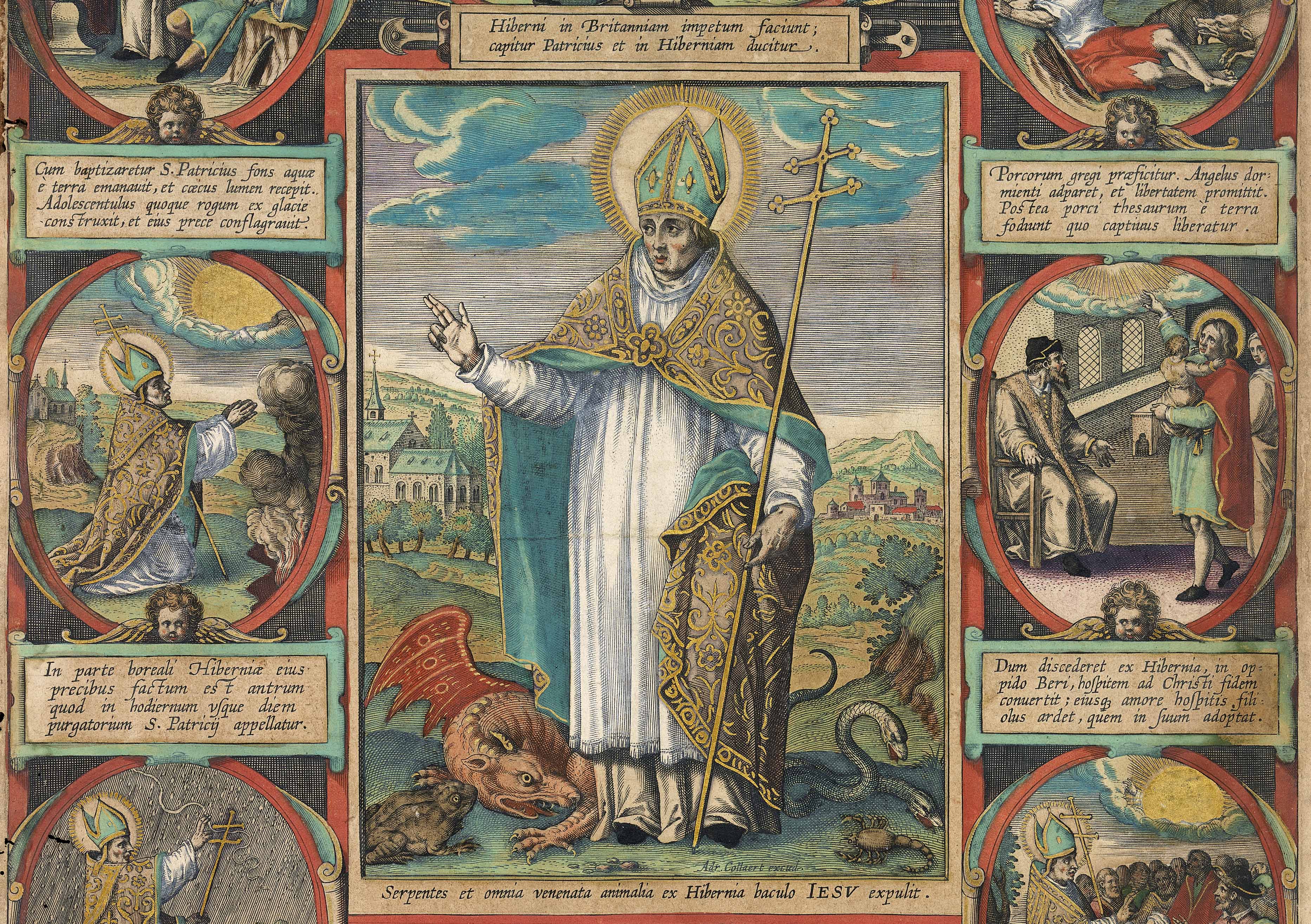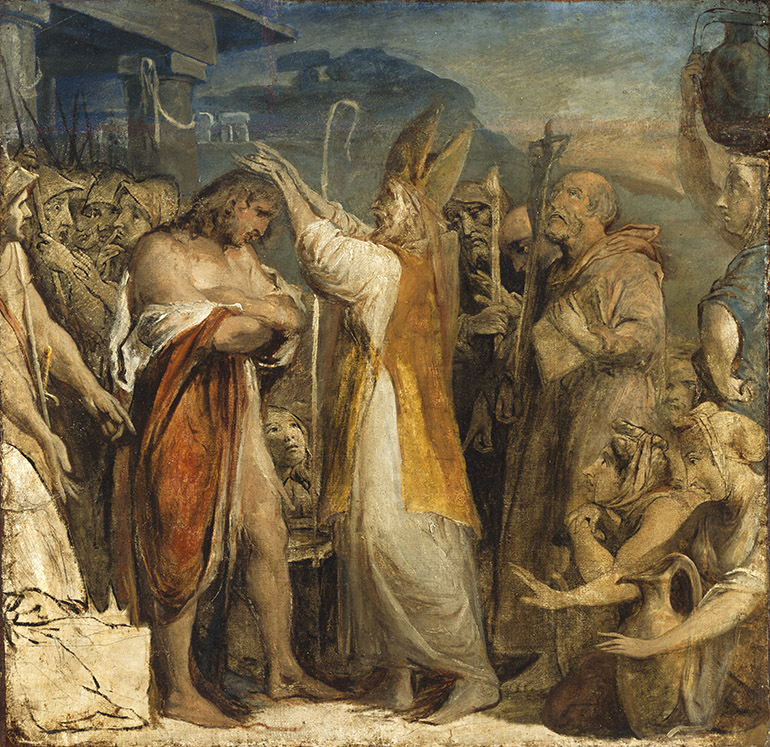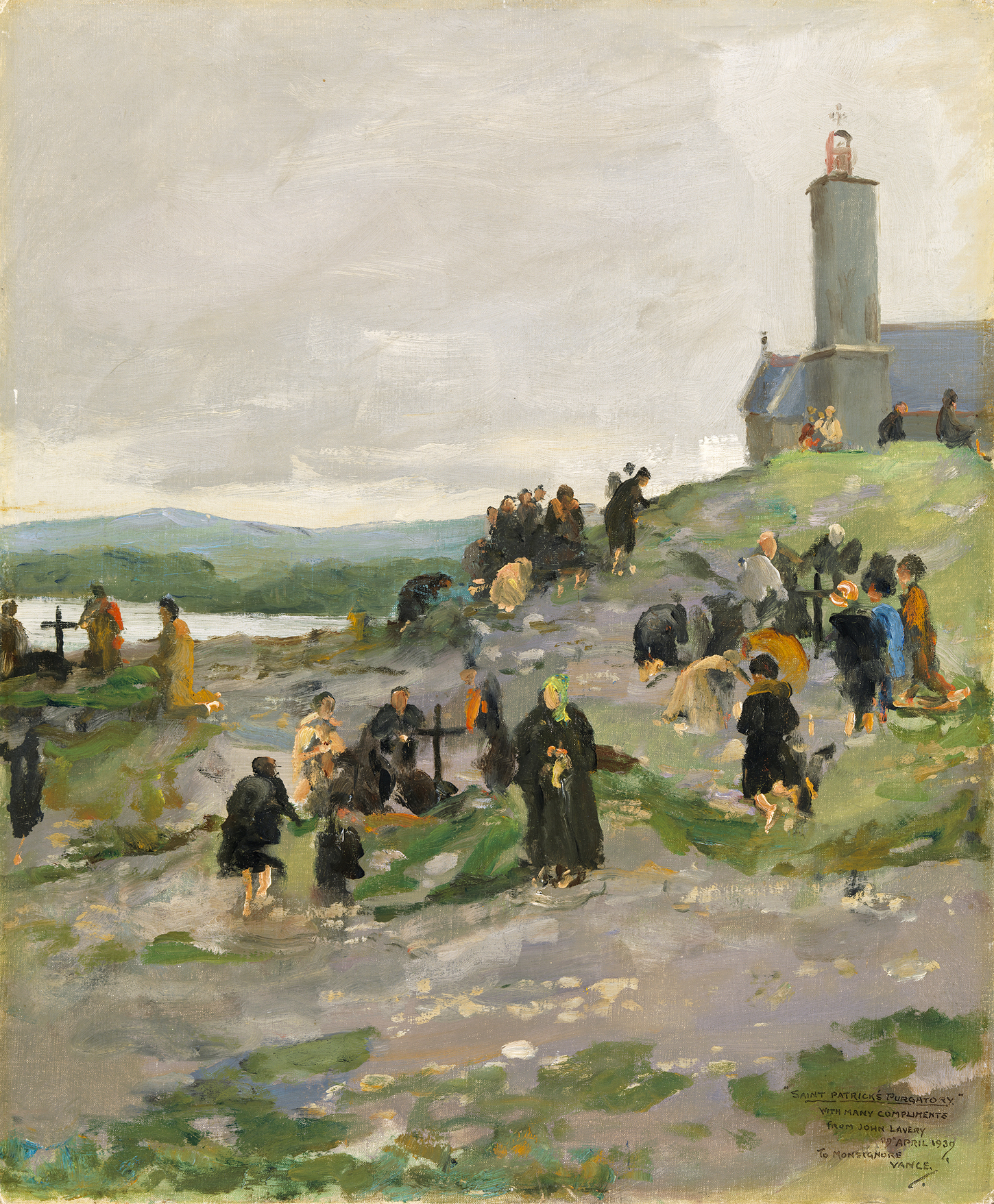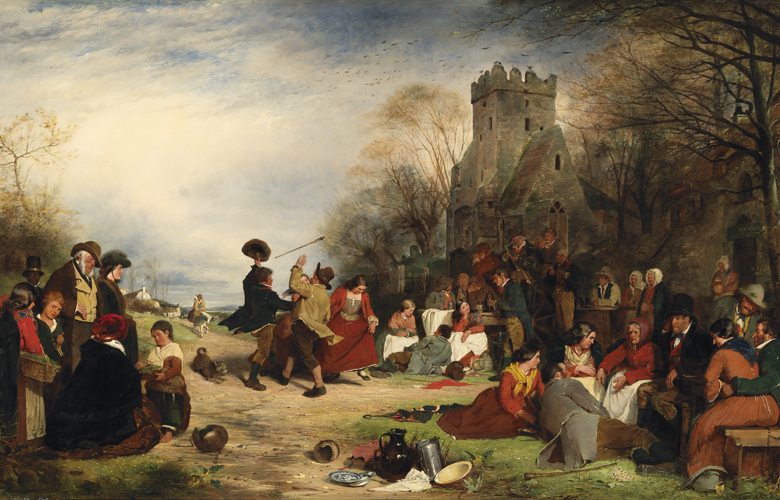 Photograph © National Gallery of Ireland
Photograph © National Gallery of Ireland

Join us in the Gallery this Saint Patrick's weekend.
We're marking the occasion with free themed tours of the collection on the day itself, and we'll also have an Irish language tour on Sunday that all are welcome to join. If you're not able to make it into the Gallery, we'll be hosting a free online Irish language 'Ciorcal Comhrá' on Thursday 16 March that you can join from wherever you are in the world.
We have plenty planned for the rest of the weekend, too:
- We'll have free general tours of our collection all weekend that you can join.
- Lots of interesting exhibitions that you can explore, all free of charge.
- Plus a drop-in creative workshop for families in our Shaw Room on Sunday morning - beidh cainteoir Gaeilge ar fáil más fearr leat an cheardlann a dhéanamh trí Ghaeilge (there will be an Irish speaker available if you prefer to do the workshop through Irish).
Scroll down to see some Saint Patrick's day related works in the collection.
Related artworks
 Photograph © National Gallery of Ireland
Photograph © National Gallery of Ireland
Adriaen Collaert (1560-1618), Saint Patrick, 1603 - detail
This print by Adriaen Collaert, a successful engraver and print publisher who based himself in Antwerp. The central image shows Patrick as a triumphant bishop wearing an elaborate cope and mitre. He holds a distinctive double-headed crozier and is surrounded by the poisonous creatures he banished from Ireland. The Baroque-style roundels illustrate dramatic scenes from his life including, at lower right, the saint unwittingly stabbing the foot of a Gaelic king while preaching. The colouring is carefully done, probably by a professional colourist, using a combination of gouache, transparent washes and gold leaf.
The artist, Collaert, styled himself ‘publisher to the Counter-Reformation’ from around 1600. The print was published in 1603, the year the Gaelic Lord Hugh O’Neill’s uprising was successfully suppressed by English forces. The Latin inscription, which translates as ‘P.S. greatly wishes an increase of Catholic faith and spiritual grace to the Senate and people of the fair city of Dublin in Ireland’, indicates that it was published to encourage Dublin citizens in their faith. This work can be seen as part of a wide cultural movement which aimed to promote and further the aims of Catholic Ireland.

James Barry (1741-1806), The Baptism of the King of Cashel by Saint Patrick, c.1800-1801
James Barry exhibited just one painting in Ireland during his lifetime, a finished version of this picture, which was purchased for the Irish House of Commons. This unfinished oil sketch represents Barry’s return to the same subject forty years after painting the original. He derived the subject from a 17th-century account of Irish history that appeared in English translation in 1723. According to the legend, Saint Patrick – while baptising the King of Cashel – accidentally pierced the monarch’s foot with his crozier. The king endured his pain with dignity, refraining from reacting to the injury.

John Lavery (1856-1941), Saint Patrick's Purgatory, Lough Derg
Saint Patrick spent forty days fasting and praying on an island near Donegal, now known as St Patrick's Purgatory. Pilgrims have come since the 6th century and over 20,000 still visit today during the main season from June to August. A day of fasting is followed by three days of prayers, walking barefoot around the crosses laid out on the island and an all-night vigil in the Basilica, the only sustenance tea and toast. Artist Sir John Lavery was there in 1928, and was allowed to keep his boots on. The weather was unusally good during his visit. He later gave this memento to Monsignore Vance, which is more suggestive of the ususal wind-swept experience, as figures gather at the crosses.
 Detail from Erskine Nicol, 'The 16th, 17th (St Patrick's Day), and 18th March', 1856. Photo © National Gallery of Ireland
Detail from Erskine Nicol, 'The 16th, 17th (St Patrick's Day), and 18th March', 1856. Photo © National Gallery of Ireland
Erskine Nicol (1825-1904), The 16th, 17th (St Patrick’s Day), and 18th March, 1856
Though Saint Patrick's Day remained for most of the Irish population in the mid-nineteenth century principally an event in the liturgical calendar, Scottish artist Erskine Nicol depicted it here as an opportunity for commercial enterprise and revelry. This is emphasised by the fact that a woman to the right, enjoying the amorous approaches of a young man, sits on a set of rosary beads, while the church in the background is conspicuously shut. Nicol maintained a close and longstanding relationship with Ireland, but is often associated with theatrical, and often pejorative, depictions of Irish peasants.



